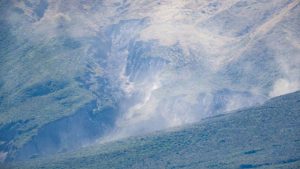
Sam Hopkirk, from Taranaki Kiwi Trust, and students Stevie-Lee Pauga 10, Naveah Makatea Cooper 10, and Turi Broughton-Rewiti 9, meet one of the birds released on Tuesday. Phoo- Vanessa Laurie
Kiwi release ‘season’ got under way with the release of five birds on Taranaki Maunga on Tuesday.
They were the first of 34 that will be moved out of the region’s kiwi nursery during April.
This is the third year that birds bred in the Taranaki Kohanga Kiwi At Rotokare, a partnership between the Taranaki Kiwi Trust and the Rotokare Reserve Trust, near Eltham, have been released.
The translocations are made possible by hundreds of volunteers working alongside staff from the two trusts and the Taranaki Mounga Project, Department of Conservation and the Kaitake Ranges Conservation Trust.
Read the full Taranaki Daily News article here.







